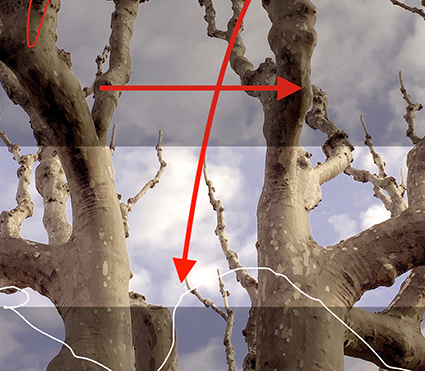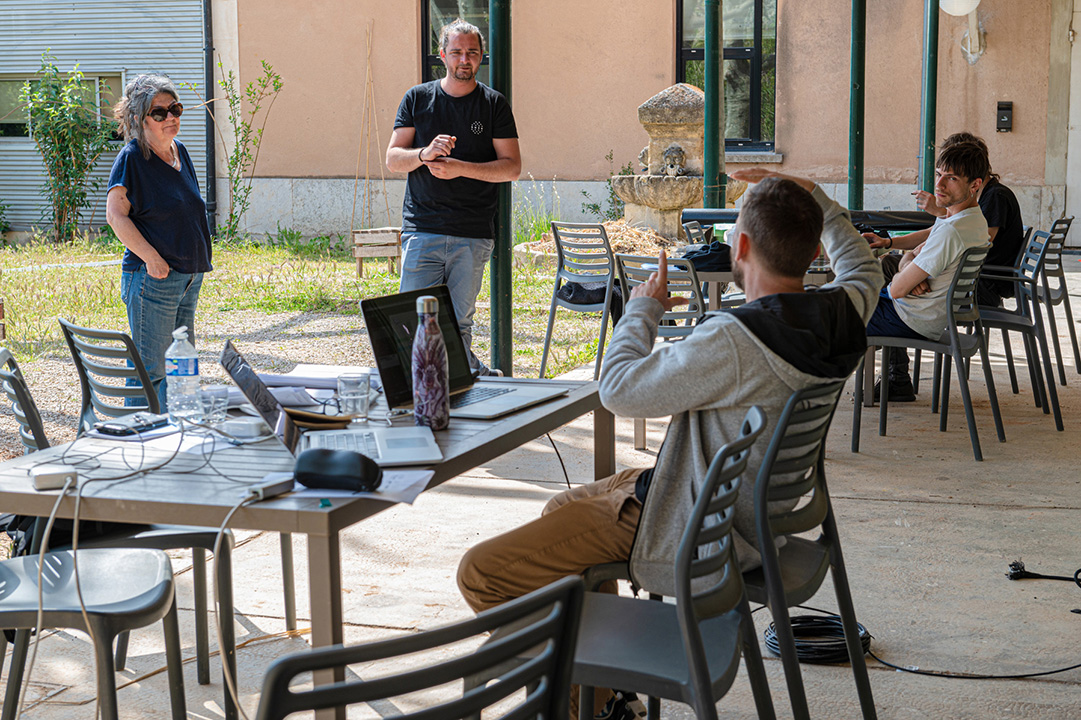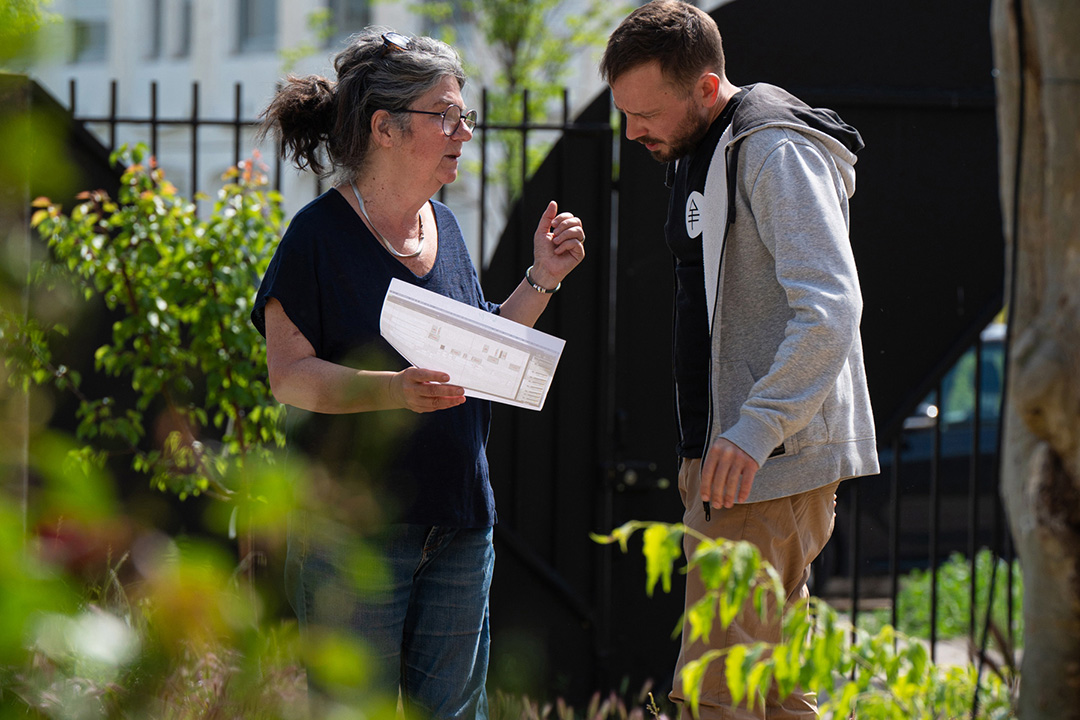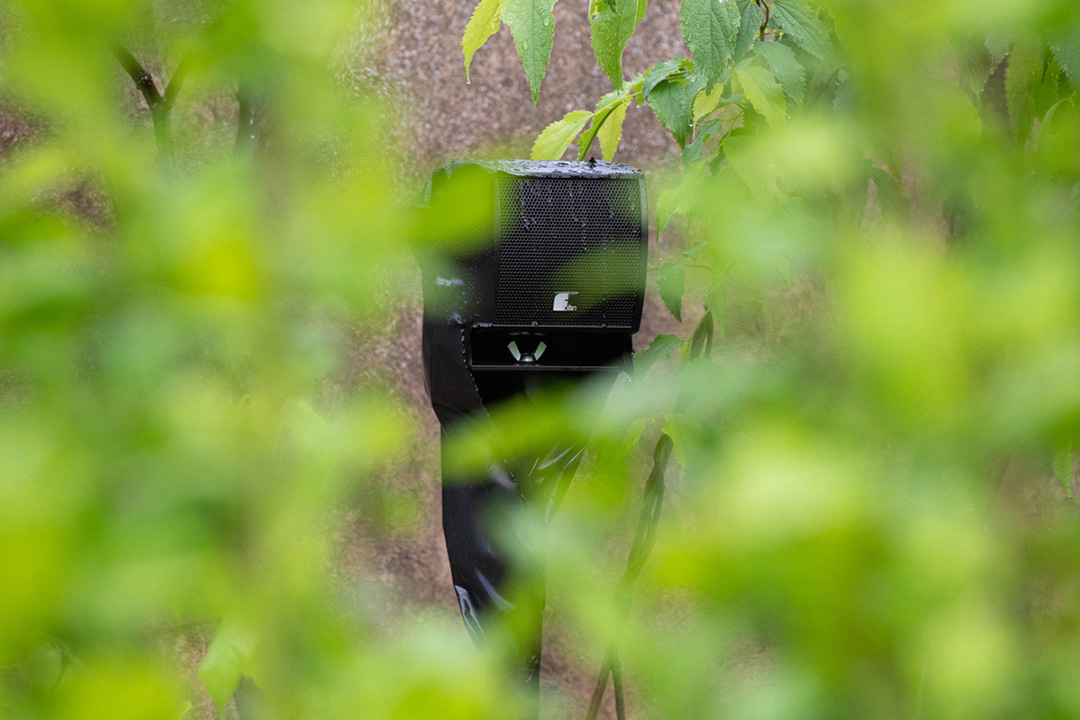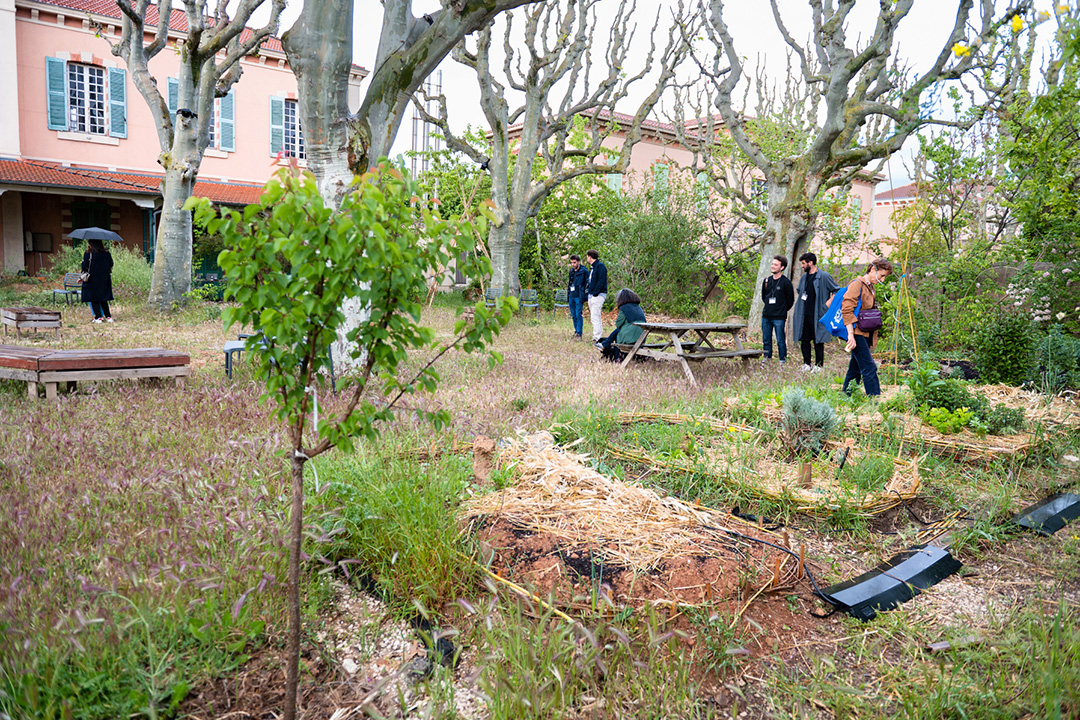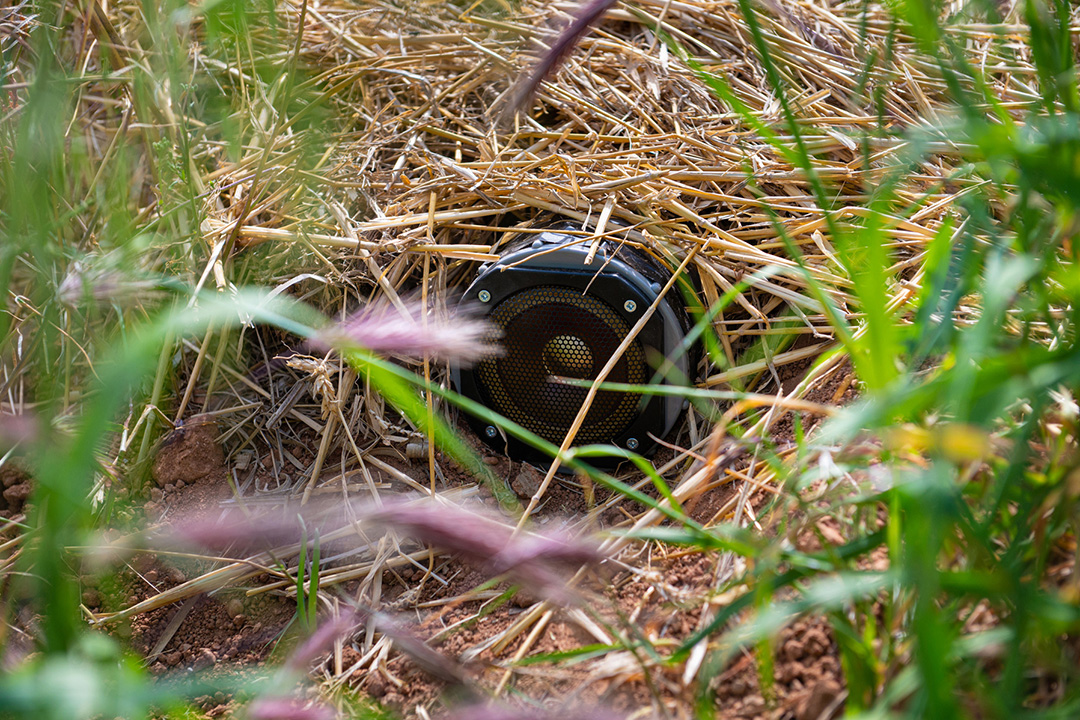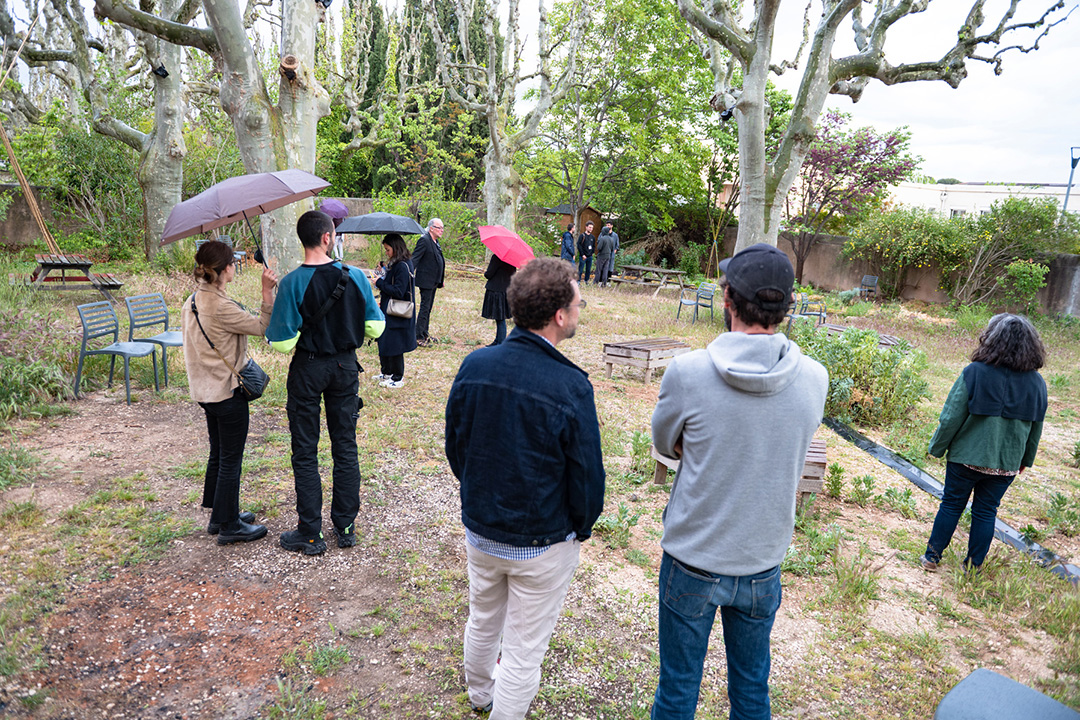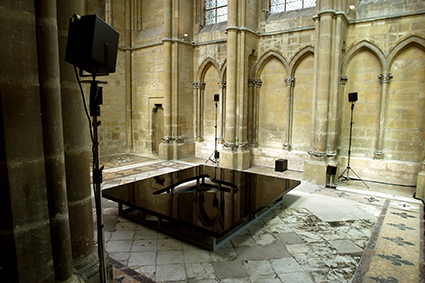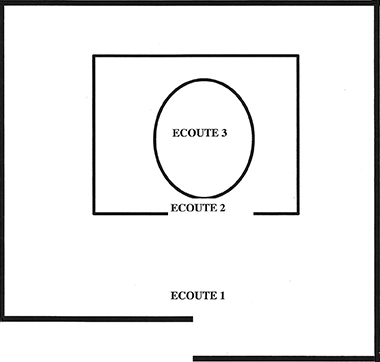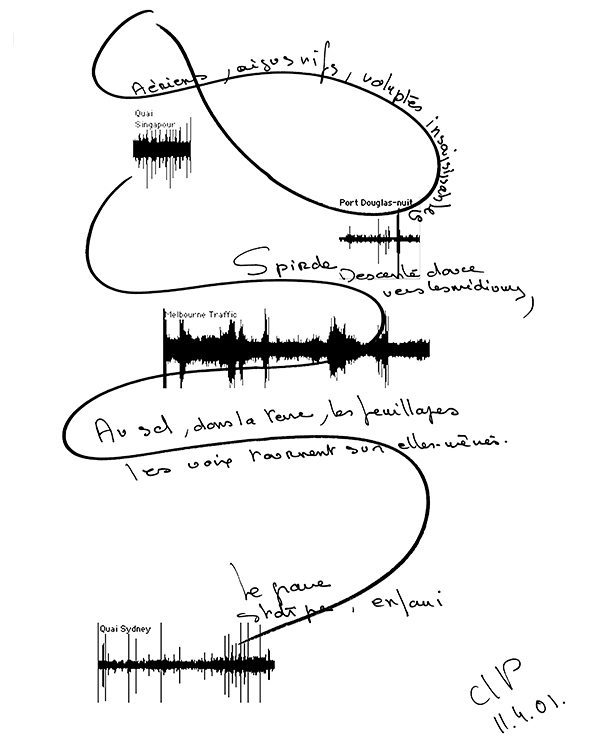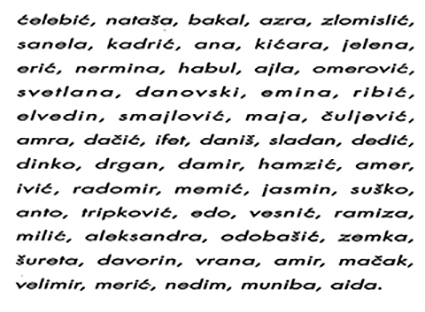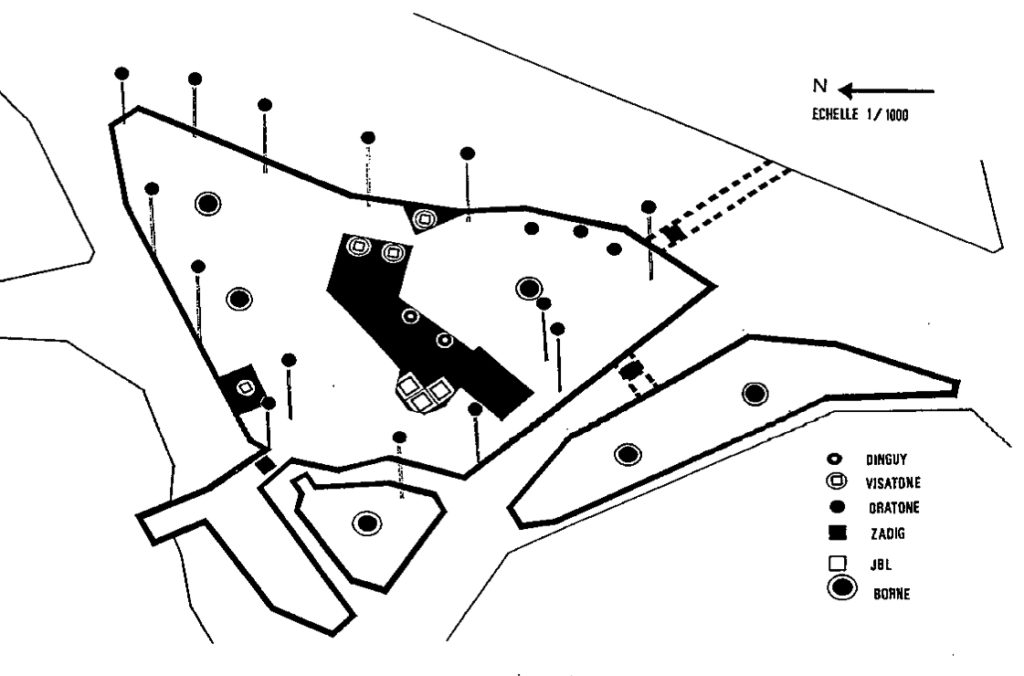L'esquive
3 bis f Centre d’art contemporain / Aix-en-Provence
Festival Propagations. 2022
The title L’esquive refers to the way of surreptitiously escaping from a situation or a place, of slipping into the interstices, of disappearing and perhaps reappearing elsewhere. It is a question of going to see the other side of the walls, whether they are material or mental, perhaps both at the same time, to glimpse other worlds, other imaginary landscapes. The performance is a conversation between Dominique Pifarély on the violin and his electroacoustic device, extending the initial sound material of the musical composition. The installation seeks to blend into the garden’s setting, into its memory, to colour it in a certain way through sound. The compositional work begins with the creation of a sound palette, followed by the creation of dynamic temporal and spatial behaviours of the musical forms resulting from this palette. Small, invisible sound sources are integrated into the vegetation and furniture of the garden: on the ground, the sound moves according to the shapes of the plantations, volutes, squares, etc. On the ground, the sound moves according to the shapes of the plantations, volutes, squares, etc. In the bushes, at mid-height, the sound delimits a listening territory. In the trees, the sound projected towards the ground builds a kind of canopy…
Credits
Composition: Cécile Le Prado
Computer music production:
Gaëtan Parseihian
Sound Engineer: Damien Ripoll
Samples:
Violin: Dominique Pifarély
Cello: Pierre-Marie Blind
Piano, voice and field recording in Beyrouth: Cécile Le Prado
In partnership with: le 3 bis f
Commissioned by the GMEM
Delegated production GMEM
Thanks to: Fatiha Allagui, Martin Antiphon, Pierre-Marie Blind, Chantal Boursaux, Pascale Gérard, Michel Le Louarn, Music Unit,
Manuel Poletti
Massilia, carnet de bord
Massalia, Carnet de bord is a sound commission created in partnership with the gmem-CNCM-marseille
for the fitting rooms of the Galeries Lafayette Marseille Prado shop as part of the Escales commission.2019



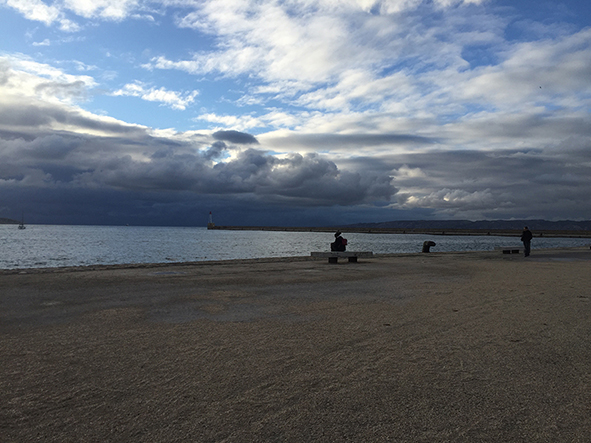

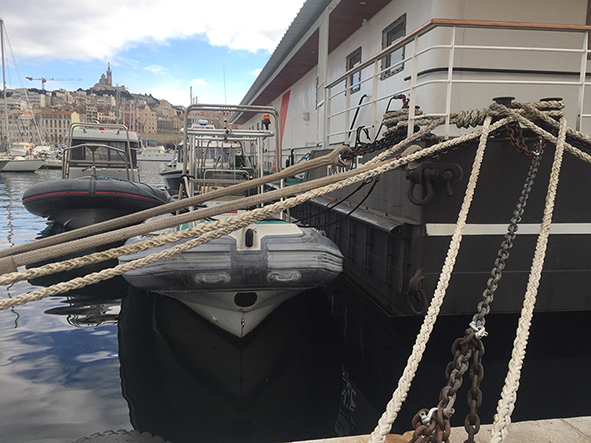
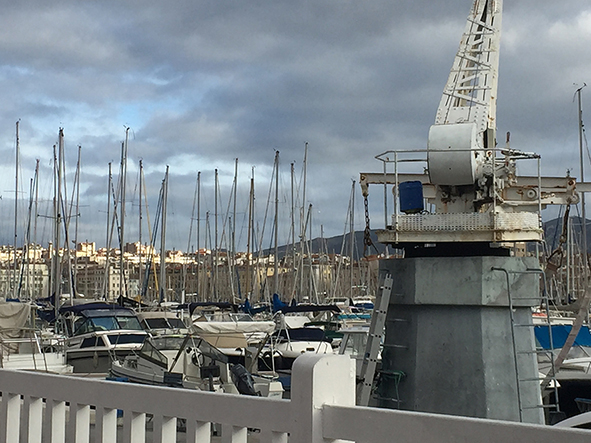
Ghinà'
On the occasion of the bicentenary of Jean Baptiste André Godin’s birth. 2017
This composition highlights the voice, the voice in all its richness the voice in all its richness, reflecting the soul and the mystery, the incomprehensible and its multiple interpretations.
The transcribed texts of the spiritualist sessions in which Jean-Baptiste André Godin participated are whispered, read in an intimate voice or declaimed and then set in resonance with instruments.
Stimulating the intimate and sonorous breathing of the place, making it sing is at the heart of Ghinà’.
In Sufi music, Ghina’ means singing.
Technical review
The Sound Court was conceived in 2010 by the composer
Jean-Christophe Desnoux and computer music director
director Manuel Poletti. It is a broadcasting device,
consisting of 52 loudspeakers installed under the air vents
vents in the central pavilion courtyard and 6 spatialized bass
placed in the window wells.
The system is powered by a computer that runs the various programs written or reinterpreted for the place. The Sound Court is a meta musical instrument that has its own writing and spatialization tools and spatialization tools, like a process factory, where sounds can be sounds can be fixed, generative, random or stochastic.
Musical sequences reveal certain possibilities of playing with space, with space, with the circulation of sounds at variable speeds and paths polyphonies and polyrhythms linked to space…
In the Sound Court, the musical work behaves like a living organism.
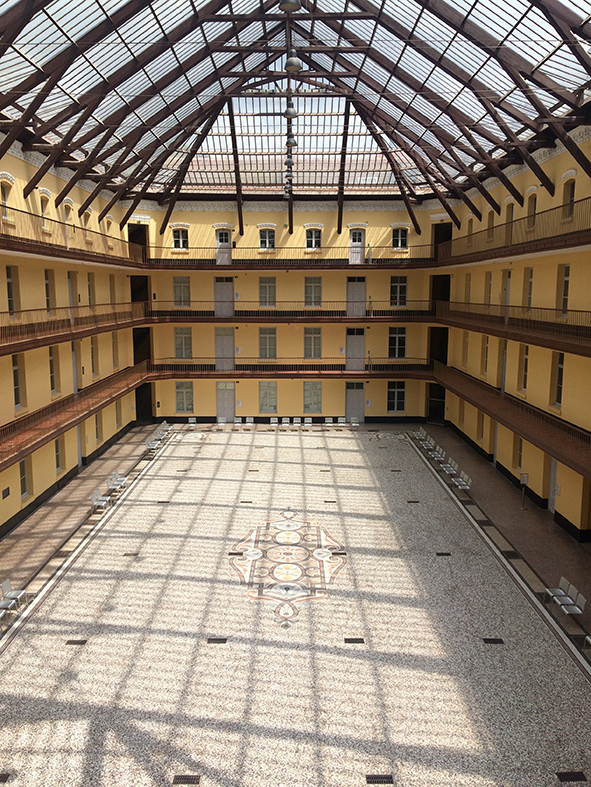

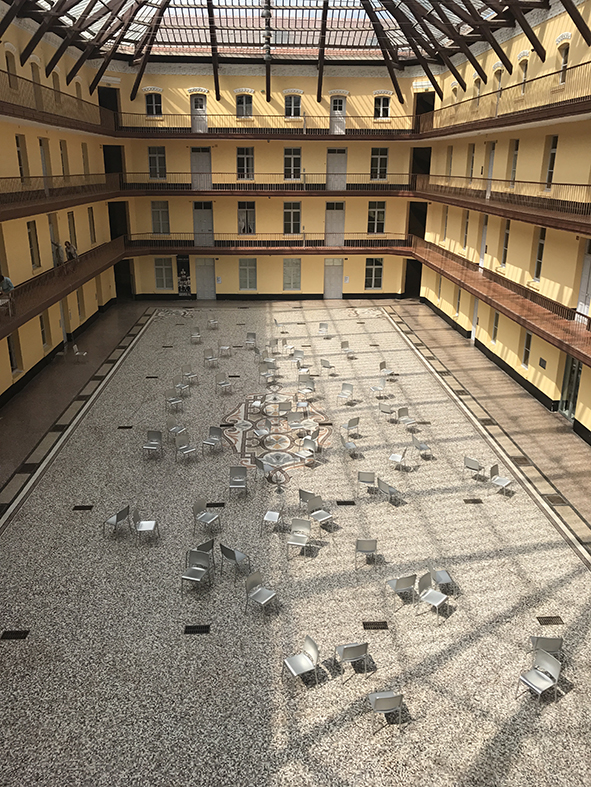

Other extracts…
Credits
Musical composition: Cécile Le Prado,
Sound designer and musical assistant:
Pierre-Marie Blind,
Computer music director: Manuel Poletti (Music Unit)
In collaboration with the Conservatoire national des arts et métiers
and the CEDRIC laboratory.
Readings: Gavriel Attali, Daniela Jordanova, Cécile Le Prado,
Sarra Mehamel, Martin Saint-Pierre, Maria Vilaora, Jose Xavier.
Commissioned by the Familistère de Guise / syndicat mixte du
Familistère Godin, with the support of the Département de l’Aisne, the
Hauts-de-France Region and the State.
Îles Éphémères
Prieuré de La Charité sur-Loire, Cité du Mot. 2015
Credits
Music composition: Cécile Le Prado
Flûte: Jean-Michel Lejeune
Voices: Le collectif d’écriture and Cécile le Prado
Sound design and musical assistance: Pierre-Marie Blind
Computer music production: Manuel Poletti (Music Unit)
Sound engineering: Martin Antiphon (Music Unit)
Workshop with the Collectif d’écriture, Renaud Natkin for the sound recording and Alphonse Lopez for the collaborative platform
With the support of the CNAM, the Ecole des Beaux-Arts du Mans and the ENJMIN.
Commissioned with the support of the Direction à la Musique.
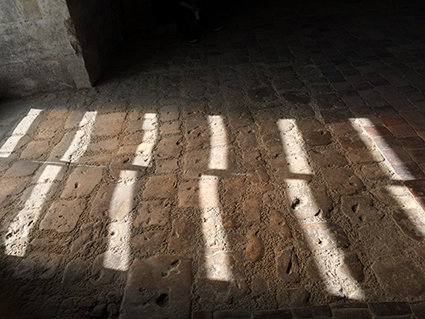
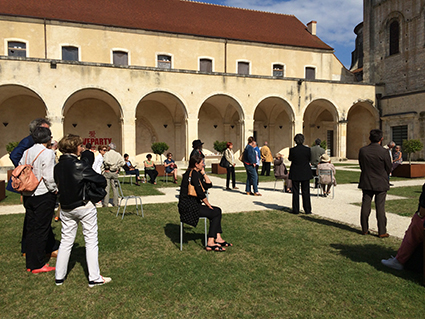
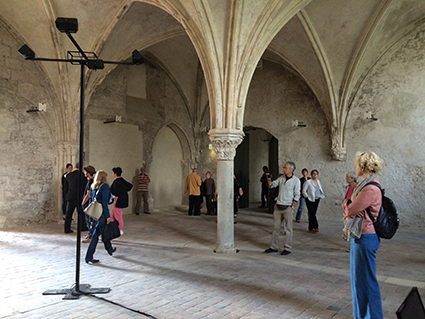
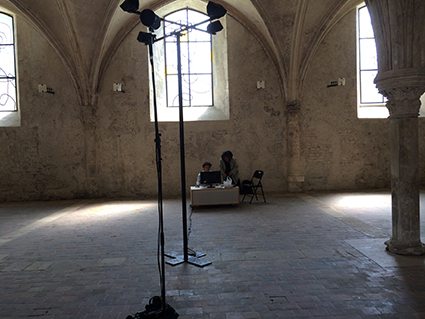


Villes d’Asie, rivages
Théâtre d’Arras. 2000
Walking at night, when the crickets take over the park of the University of Tokyo, between the chanted voices of kendo training and the preparation for the Olympic festivities, the cheers of the football fans.
The microphone guides my steps, my wanderings.
It is a kind of wandering marked by fascinations, bewitchments and sometimes worries.
These geographical meanderings between these real cities, big capitals or small fishing ports, have left me their rustles, sound strata that have gradually blended in my memory to compose another landscape.
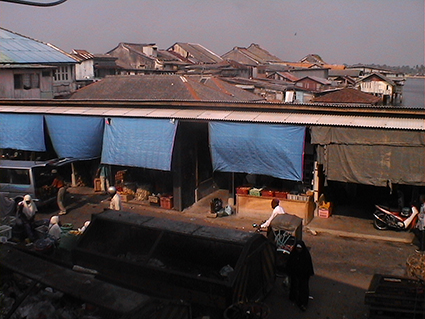
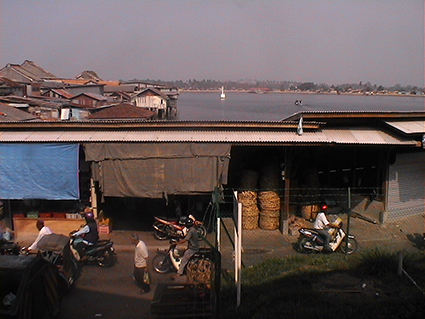
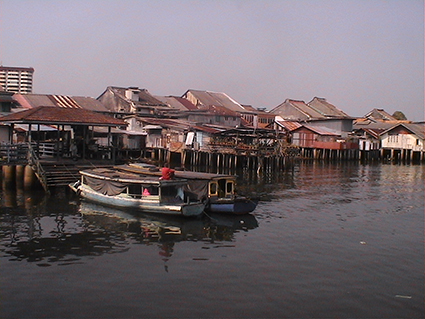
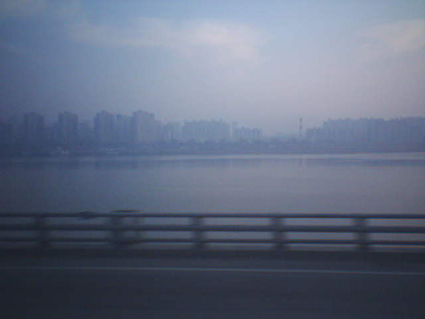


Credits
Commissioned by Cesare, Centre National de création musicale, with the support of the French government.
Delegated production: Césaré, Centre National de création musicale, Reims, France
Mixing: Samuel Alain
Musical assistance: Vivien Trelcat
Sound recording assistance: Chen Yan (Beijing), Moya Qian and Song Ximing (Shanghai) Yasuka Watanabe (Tokyo), Undunk Kim (Seoul)
A window in New-York
Châlons-sur-Saône. 2000
Stage 6 of a project conceived by Cécile Le Prado and Stéphane Natkin,
mixing image and sound, in homage to Marc Rothko and John Cage.
“A window as an opening onto the city, a window as a filter of light and sound variations, a window as an element that focuses the gaze and the ear.”
The basis of the composition is a series of recordings made in New York in 1996 at different times of the day and in different locations, (the awakening of the city heard from a hotel room, the garbage in Time Square early in the morning, the footsteps at the entrance to Wall Street, a market at noon, a dance company rehearsal in the afternoon overlooking Broadway, the traffic on the Brooklyn Bridge in the evening after leaving the office, the bars in Soho, etc).
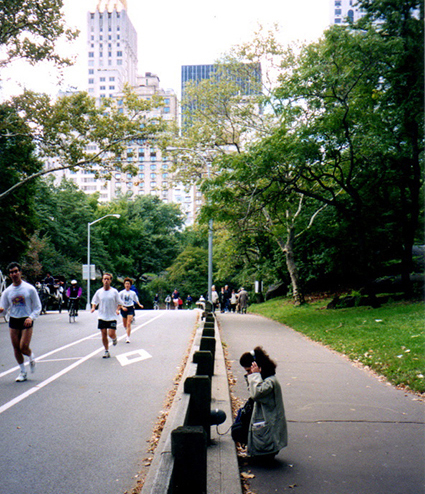
Credits
Concept: Stéphane Natkin,
Cécile Le Prado
Image and installation design:
Stéphane Natkin
Software: Bruno Lameyre
Ellès
Creation at FRAC Champagne-Ardennes. 2004
ELLÈS is a sound installation resulting from the meeting
between the choreographer Emmanuelle Huynh and the composer Cécile Le Prado.
ELLÈS is the witness of the intertwining in which we stand. The world imprints its events on our bodies at the same time as they constantly reconfigure it. It is therefore a question of the repercussions of the vast body of the world in ourselves as well as the resonance of our singular bodies in this world.
ELLÈS is an edge gesture in which the musician and the choreographer are concerned with spacing, i.e. organising forms, in this case sound forms, in a spatial behaviour.
The two artists work together to create small articulations, hybrid sound objects between their two imaginations. They stage patterns of exchange between outside and inside: undulations, tremors, propagations, densifications, withdrawals, immobility. The behaviour of sound in space, its choreography, proposes on the one hand a peripheral space that the visitor travels alone, on the surface of his skin, and on the other hand a central space of shared collection.
Credits
Musical assistance: Manuel Poletti
Musical trainee: Benjamin Ponant
Sound engineer: Stéphane Petit
Software Spat@ircam-Centre Georges Pompidou
IT provision: Cedric Laboratory
Follow-up of the plastic realization and design of the elements of the walk: Nicolas Floc’h
Partnership: Amadéus Atelier 33
Coproduction: CESARE, FRACCA, LE MANEGE
ELLÈS received a creation grant from the DRAC Champagne Ardennes
L'autre rive
Created at Barbirey’s garden, Festival “Entre cour et jardins”. 2004
À Maria
“Landscape is something that you pass through, it is what you experience when
you travel… The purpose of travel is not to find but to lose.
The object of the journey is not to find but to lose, not to tell but to listen.”
Gilles A. Tiberghien “The Principle of the Axolotl“
Three places, three circumstances of listening and looking
The proposed route is as follows:
The orange grove
Six windows open onto the Ouche valley.
Six landscapes offered to our gaze up to the horizon line and points of reflection around a reading by Gilles A. Tiberghien.
This is a solitary or collective listening experience requiring time for the text to resonate with our sensations.
The edges
The eye is led by the contours and the possible visual openings through the vegetation. We can guess the image of a garden, its possible perspectives, its points of view…
Wander around, pass through or stop a little behind the garden. The proposed listening is that of multiple possible stories of this place. Memory of other landscapes, other places travelled, other climates, other sensations, other fantasies…
Here, listening is solicited by auditory memories, traces to which we attach more or less importance, more or less evocative fragments according to our own history, our own travels. There is no story, but stories that combine, mingle through our steps (forest and mangrove of the West
of the island of Cuba, marshes in the south of the Vendée, banks of the Tagus river in Lisbon…). Look for a secret listening, attentive to different furtive sound presences
in this secret garden.
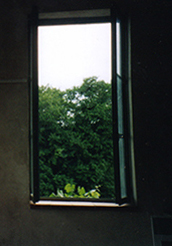

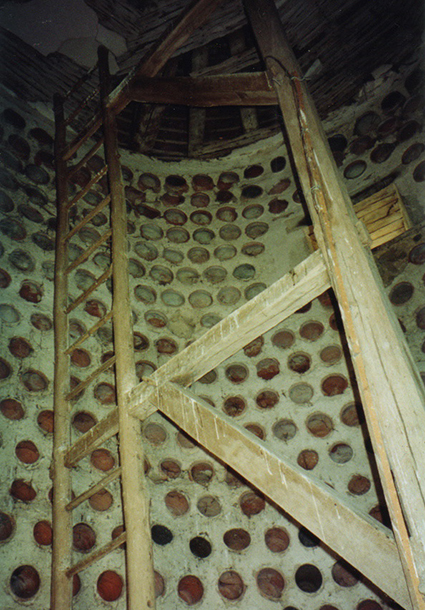
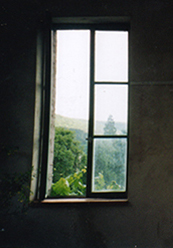
The dovecote
It is a call to an intimate listening experience where the visual perspective stops at the walls, a kind of acoustic vase and ancient shelter for birds
Close your eyes and let hidden landscapes appear, mental images aroused by a musical proposal, a story to be reconstituted, where voices and sound fragments build their canvas during our listening time.
Other extracts…
Credits
Collaboration Ircam/Radio France
Sound recording: Cécile Le Prado, Gilles Mardirossian, Christian Sebille
Voices: Nuno Bizaro, Margarida Mestre, Gilles A. Tiberghien, José Xavier, Cécile Le Prado
Soundfield sound recording assistant: Emmanuel Rio
Musical assistance and Ircam mixing: Romain Kronenberg
Production France Culture: Gilles Mardirossian
Mixing Radio France: Michel Créïs and Pascal Baranzelli
Spat@Ircam software
Secrete Lisboa
Workshop of Radio Creation . 2003
Radio France Broadcasting
A sound walk through Lisbon, seven “visitor-guides” representing all the arts give their point of view on the city. “Fernando Pessoa “An elusive city inhabited by mirages and ghosts. A journey through Lisboa, in its inner space, which at the same time opens the doors to the outside world, to other worlds. Facing the Tagus, it slips away to other horizons, leaving gaping windows for elsewhere, for daydreams, for buried memories, for hallucinations… A vessel with moorings ready to let go, it invites you to follow it towards the open sea. The journey proposed in this workshop is a documentary fiction. It is the multi-faceted story of a city travelled and dreamed of, sometimes to the point of madness, by real people interviewed and also by characters from novels.
Technical description
Stereo and Dolby surround radio
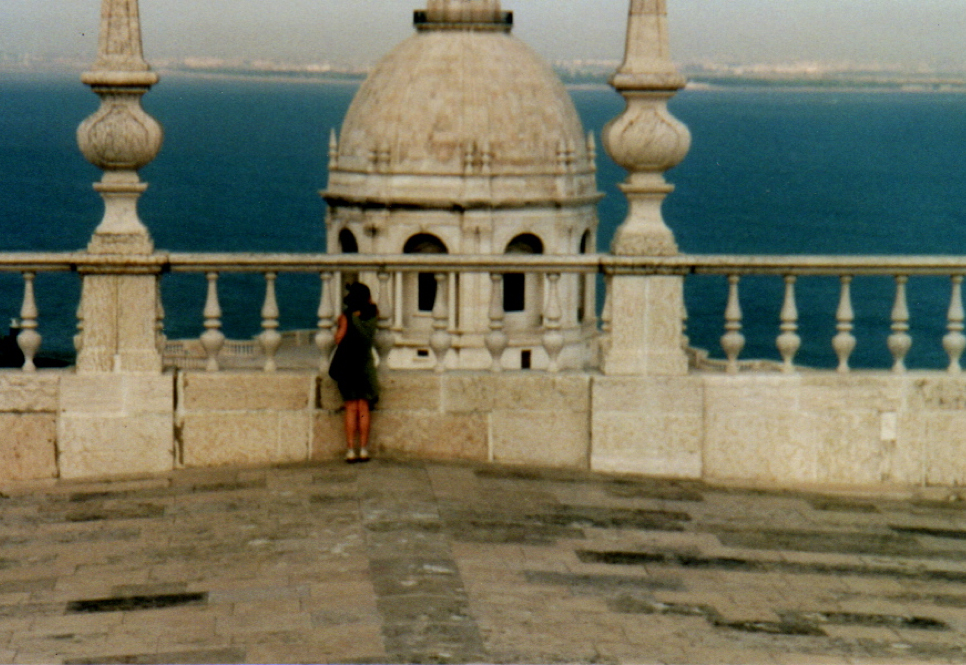

Credits
Ircam/ Radio France collaboration
Sound recording: Cécile Le Prado, Gilles Mardirossian, Christian Sebille
Voices: Nuno Bizaro, Margarida Mestre, Gilles A. Tiberghien, José Xavier
Soundfield sound recording assistant: Emmanuel Rio
Musical assistance and Ircam mixing: Romain Kronenberg
Production France Culture: Gilles Mardirossian
Mixing Radio France: Michel Créïs and Pascal Baranzelli
Spat@Ircam software
Extracts from texts : Herberto Helder “The continuous poem,
Margarida Mestre “Lamento“, “Por um ruiz”
Florbela Esperença “The Aviator”
Gilles A. Thibergien “The Principle of the Axolotl and supplements”.
In the shelter of a maple tree
Created at Zadkin Museum/ Paris
Exposition “Paysages d’entre-villes”. 2001
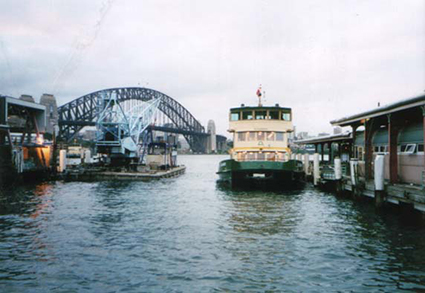
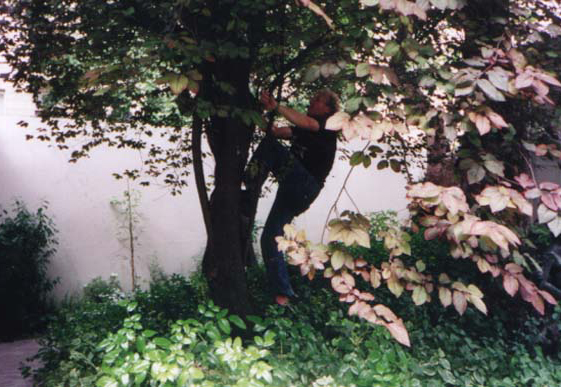
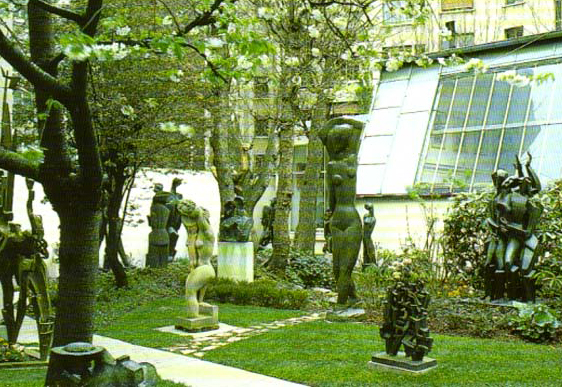
Credits
Musical assistance: Véronique Larcher
On-site broadcasting set-up: Bernard Byk and Michel Deluc (Atelier 33)
Software: Audiosculpt©Ircam Centre Georges Pompidou
Spat©Ircam Centre Georges Pompidou
Production of the installation: Paris Musées
Production of the work: Clameurs
Creation 2001
With the support of :
Atelier 33 / Amadeus Concept
The Ircam Centre Georges Pompidou
The Cedric Laboratory of the Cnam
Water Lines, Esquisse No. 1
Xippas Gallery/ Exposition “Remise en forme”. 1997
Prefiguration of the permanent installation made at the iUT in Niort in 1998
Commissioned for a 1% art project for a public building.
Between the Bay of Aiguillon and Niort, sequences with captured sounds having as a common point the imaginary of water, white water, the sea and then more introverted waters: the marsh.
In the past, the sea went as far as Niort. These sequences range from realism, water with steps without any treatment, to mixed sequences where the identifiable soundscape is mixed with spatialized sounds and finally to more abstract and musical rhythmic sequences.
We made a prefiguration of the complete work with a small interior version.
10 digital CD copies were recorded for this exhibition.
The visitor is invited to enter a rather dark environment, lit only by two lines on the floor. A sound line runs parallel to one of them. It consists of smooth water and steps on the beach. Through headphones placed on the backs of two beach chairs, one of the water lines, a sequence of a few minutes, is played in a loop. The beach chairs are an invitation to take the time to listen.
The beach chairs are an invitation to take time to listen. A large white screen, like a retro projection screen, moves slightly, without an image, with a kind of transparency.
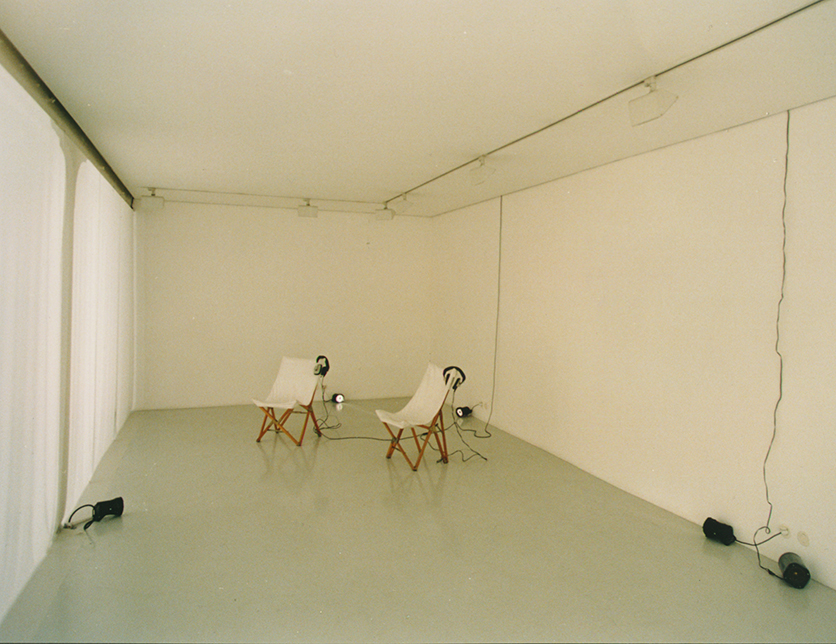
Technical description of the permanent installation in Niort
In this installation, with 4 earthen garden posts and a wooden pontoon, the sequences are fragmented into 2′ listening periods. A presence sensor triggers the next fragment until its end. Otherwise, the garden remains silent, unless movement is detected.
Crédits
Lighting: Christian Dubet
Sound engineering: CIDMA, Etablissement Public du Parc et de la Grande halle de La Villette
Production support: Espaces Nouveaux, Atelier 33
Production: Clameurs
The Triangle of Uncertainty
Seascape Suite
Creation at La Pointe Saint-Mathieu, realised in the framework
of the “Irish Imaginary” events in France. 1996
Sailors orient themselves at sea by means of natural landmarks along the coast. These points, such as church steeples, hills, water towers or lighthouses that are usually distinct from the rest of the coastline, are called landmarks. By identifying three of these landmarks in complementary directions, you can construct a triangle in which your ship will inevitably find itself: this triangle drawn on the navigation chart is called the “uncertainty triangle”.
The principle of the sound installation The Uncertainty Triangle follows the principle of triangular navigation by replacing these visual cues with acoustic cues. Lighthouses, buoys, on-board radios and many other technical installations warn the mariner of dangers or risks warn the mariner of dangers or obstacles. This installation project aims to construct a triangle of uncertainty on the terrain of a fictitious space, based on sound recordings made at the southern tip of Ireland (Fastnet Rock), the western tip of France (Brittany) and the westernmost point of Spain (Cape Finisterre, Galicia).
Sailors orient themselves at sea thanks to “Imagine the coastline seen from the Atlantic Ocean. There are the places you recognise, both distant and familiar:

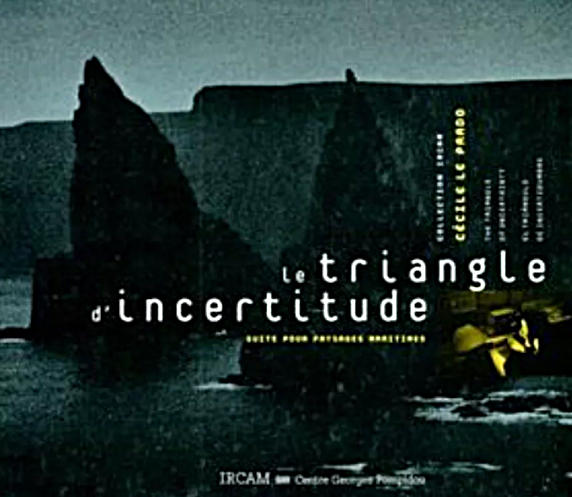

lighthouses, capes, ancestral landmarks, and also the little things, the more familiar places, a house, a line on a cliff, and finally that little pinch that sailors feel when they return to port after a long voyage. These places of memory and recognition are called landmarks.
Now close your eyes to make room for the world of sounds. Imagine yourself in the middle of the ocean, looking for landmarks, for sound landmarks. Gradually, three directions emerge and the three axes form the triangle of uncertainty. To the northwest, the Fastnet, to the south the Cabo Finisterre and to the east, Le Conquet, the tip of Brittany.
The sounds of the landscape, wind, waves, the coastline, mingle with those of the maritime signs, lighthouses, buoys, radios, and then the ports, the docks, the crates being shredded, the fog horns. There are also the lighthouses, the seabirds, the fish market, the whole sonic soul of each place that unfolds, and, for a moment, you know where you are.
Cécile Le Prado recorded the voices of the maritime landscapes. And then, in the course of a patient process of transformation, she went from sound to music, digging into the mass of information to extract the musical identity of each of these three places, these three seasides.
The Triangle of Uncertainty is thus a musical installation in which you will travel. Cécile Le Prado thus invites you to replay the drama of the immobile traveller, awake on the sleeping storm, and, like the poet, to hear further than the horizon.
Michel Chion
Crédits
Commissioned by the Ministry
of Culture.
Coproduction: Ircam, Quartz de Brest, Parc de La vIllette
Mixing-mastering: Frédéric Prin
Musical assistant: Gilbert Nouno
Scientific expertise (spat®):
Jean-Marc Jot
Sound recording assistants:
Christian Dubet, Mar Pazos Oviedo
Vocatifs
Artifices Festival 3, Saint-Denis. 1993
Vocatifs is a sound installation created for the exhibition Artifice 3.
It is a commission for an interactive work dealing with the question of memory and disappearance. The
The starting point is a list of names of children who disappeared during the first war in ex-Yugoslavia.
Yugoslavia. At the request of the United Nations High Commissioner for Refugees (UNHCR), a database
database containing the information available and necessary for the identification of the children was
constituted.
The musical composition of Vocatifs is made up of seven sequences created from the reading and transformation of these first names. At the beginning, the installation is tangible. One moves We physically move around in a somewhat monastic cell, poorly lit. At the back of this space, is a desk with a list of names. So the list is only readable by a visitor when he or she comes very close to the desk. The walls are equipped with sensors and speakers.
This space remains silent as long as no presence is detected. When a visitor enters the space he hears a playback of the list. But the further the visitor goes inside the cell to read the list, the more to read the list, the more unintelligible what he or she hears becomes because it is drowned in a reverberation effect. Legibility is only possible at the expense of listening and vice versa.
This work therefore questions the loss of identity and puts the visitor in the situation of impossibility to recognize the first names, both by listening and by seeing. In this version of the installation, the visitor’s body is involved in the real space. It is his or her movement that makes the musical composition evolve in real time composition in real time, erasing the names in a way. There is no interface manipulation,
simply the movement of the body. The visitor becomes aware of his role by experiencing the listening space.
Technical description
Interactive sound installation for 6 infrared sensors, seven speakers, two CD players
Program Max( Ircam) and Sysdiff(CIDMA)
Credits
Voices: Ruska Micic, Emir Srkalovic (association Sarajevo)
Scientific Council: Marie-Helène Serra
Production: CIDMA, Clameurs, IRCAM, Observatoire de l’Image
Vocatifs 2
Musée des Arts et Metiers / Exhibition A History of Art and Interactivity. 2015
Technical implementation
Version 2 has two new forms: augmented reality and virtual reality with the Oculus Rift.

Credits
Production of the virtual reality version: CNAM/CEDRIC
With the assistance of Seong-Hoon-Ban, Pierre-Marie Blind, Julian Moreira, Delphine Soriano
Recorded voices: Duska Micic, Emir Srkalovic
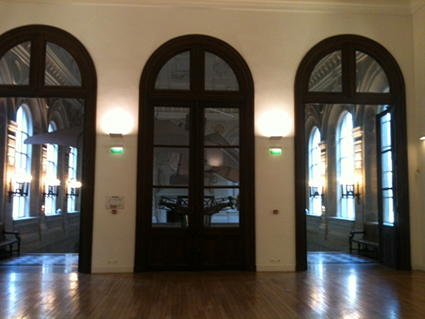
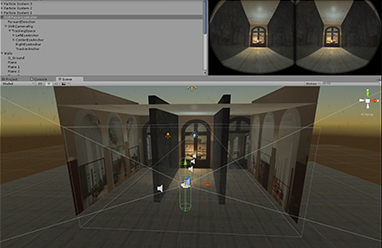
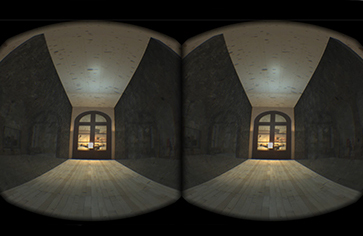
Le passeur
Jardin de la Treille / Parc de La Villette / Exhibition Parcours sonores 3. 1992.
The elaboration of a soundscape in the “Jardin de la Treille” is at first very near to a geologic research. It means to pay attention to traces, little sound signals, to dig into the memory of the site, to reconstitute the stratification.
The sounds, already archived or specially recorded for my installation, come from the site. At first from other parts of the Parc de la Villette like voices, wind in the structures, steps on metallic footbridges ; then the research includes a larger area in the north-east of Paris like industrial zones, warehouses, docks along the canal of the Ourq and main railway lines. The last type of sounds come from the life of the people in the streets, specially immigration populations in the district of Belleville.
I work on tranformations with these material. I put it out of it’s context in time and place to create a sort of fiction. This is my own sensation of the life and the history of this garden.
This fiction is elaborated according to the topographic, acoustic and sonorous identity of the garden.
The invisible location for the loudspeakers and the precise choice of the movements of the sound in the site participate strongly in the elaboration of the delicate balance between the sound and musical architecture and the landscape.
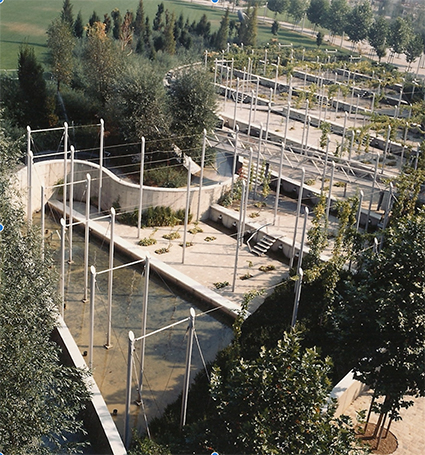
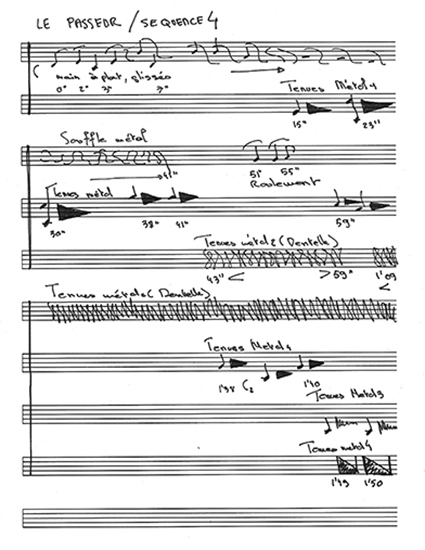

Description technique
Loudspeakers and cables should not be seen by the visitor.
Low frequencies come from under the garden in a technical gallery
Medium and high frequencies come from twenty loudspeakers with a water protected membrane. They are inside the boxes of the fontains, directed towards the inside to reflect the waves.
The control place is in a building near to the garden. The sound is recorded on an eight channel tape. The signal is sent to a computer system(Sysdiff) for the writing of the movements of the sound, spatialisation,between the different loudspeakers before being amplified.
Credits
Avec le soutien de la direction de la Musique-Ministère de la Culture, avec la collaboration de TEAC France TASCAM
Coproduction : LYGIS
Diffusion assistée : CIDMA
Documentation : Pierre Gaudin et Jean-Michel Gourden.
Follia
To compose an electroacoustic musical piece based on sound traces of life in the marsh and activities (chamois, glove making, violin making) with large imprints in the history of Fort-Foucault.
To open up the musical space to the wanderers by broadcasting on the site.
To make the trajectories, the immobilities, the lines of force of the architecture and the gardens emerge and be reinforced by the soundscape.
